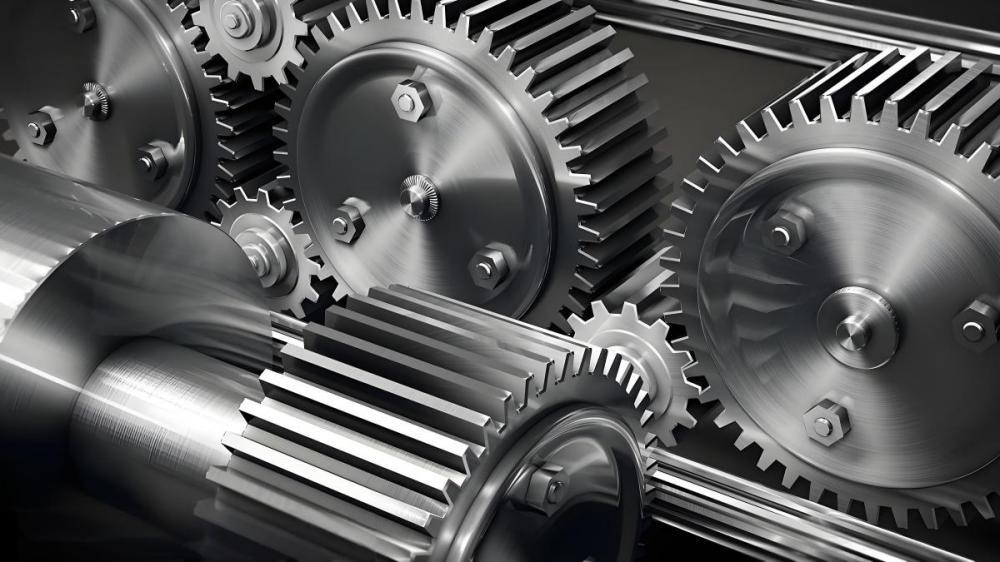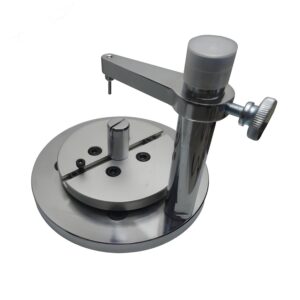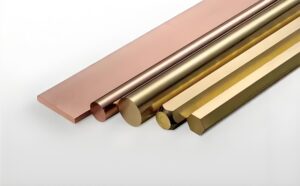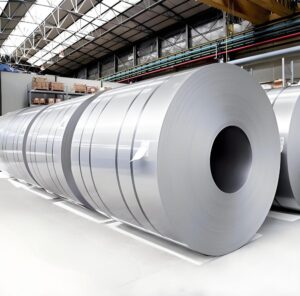What is 17-4PH Stainless Steel?
17-4PH stainless steel, also known as UNS S17400 or SAE Type 630, is a precipitation-hardening martensitic stainless steel. It combines high strength, hardness, and moderate corrosion resistance, making it a favored choice in numerous high-performance applications. The “PH” in 17-4PH stands for “precipitation hardening,” a heat treatment technique used to enhance the mechanical properties of the material.
The numbers “17-4” represent its chemical composition: approximately 17% chromium and 4% nickel. Developed in the 1940s, 17-4PH quickly gained popularity due to its unique ability to be heat-treated to different strength levels, all while maintaining good corrosion resistance.
Used widely in aerospace, oil and gas, nuclear, marine, and machining industries, 17-4PH stands out for its versatility. Its adaptability and performance under demanding environments make it a highly sought-after material in both domestic and international markets.
Composition of 17-4PH Stainless Steel
The chemical makeup of 17-4PH is what gives it its remarkable properties. The alloy typically consists of:
- Chromium (15-17.5%): Provides corrosion resistance and enhances durability.
- Nickel (3-5%): Contributes to toughness and corrosion resistance.
- Copper (3-5%): Aids in precipitation hardening, improving strength.
- Manganese (1% max): Enhances workability and strength.
- Silicon (1% max): Improves strength and supports casting processes.
- Columbium/Niobium (0.15-0.45%): Stabilizes the alloy and prevents corrosion in specific conditions.
- Carbon (0.07% max): Maintains hardness while keeping the alloy machinable.
- Iron: Forms the base of the alloy, balancing the other elements.
This precise composition allows 17-4PH to achieve a balance of strength, toughness, and corrosion resistance, making it suitable for complex machining processes. The addition of copper and niobium sets it apart from other stainless steels, enabling the precipitation-hardening process that enhances its mechanical properties.
Properties of 17-4PH Stainless Steel
The properties of 17-4PH stainless steel make it a standout choice for precision machining. These properties can be divided into mechanical and physical categories, each contributing to its widespread use.
Mechanical Properties
17-4PH is renowned for its impressive mechanical properties, which can be tailored through heat treatment. In its annealed condition, it offers good machinability, while heat-treated conditions (such as H900 or H1150) enhance its strength and hardness. Key mechanical properties include:
- Tensile Strength: Up to 190 ksi (1310 MPa) in the H900 condition, making it ideal for high-stress applications.
- Yield Strength: Around 170 ksi (1170 MPa) in peak-aged conditions, ensuring durability under load.
- Hardness: Ranges from 35-45 HRC depending on heat treatment, balancing toughness and wear resistance.
- Elongation: Typically 5-15%, allowing for some flexibility without sacrificing strength.
These properties make 17-4PH suitable for components that require high strength and resistance to deformation, such as gears, turbine blades, and fasteners.
Physical Properties
In addition to its mechanical strengths, 17-4PH boasts physical properties that support its use in diverse environments:
- Density: Approximately 7.8 g/cm³, comparable to other stainless steels.
- Corrosion Resistance: Excellent resistance to oxidation and moderate resistance to acidic and saline environments.
- Thermal Conductivity: About 15 W/m·K, suitable for applications involving heat dissipation.
- Magnetic Properties: 17-4PH is magnetic in both annealed and hardened conditions, which can be advantageous for specific machining processes.
These physical characteristics ensure that 17-4PH performs reliably in environments where temperature fluctuations or corrosive elements are present.
What Are Types of 17-4PH Grades?
17-4PH stainless steel is typically classified by its heat treatment condition, which determines its mechanical properties. The most common grades or conditions include:
- Condition A (Annealed): The base condition, offering good machinability but lower strength.
- H900: Heat-treated at 900°F, providing maximum strength and hardness but reduced toughness.
- H1025: Heat-treated at 1025°F, balancing strength and toughness for general-purpose applications.
- H1150: Heat-treated at 1150°F, offering improved ductility and corrosion resistance at the cost of some strength.
- H1150M: A modified version of H1150, providing enhanced toughness for specific applications.
Each condition is tailored to meet specific requirements, allowing manufacturers to select the grade that best suits their project’s needs. For instance, H900 is ideal for high-strength components, while H1150 is better for applications requiring greater corrosion resistance.
Applications of 17-4PH Stainless Steel

The versatility of 17-4PH makes it a popular choice across various industries. Its ability to withstand harsh conditions while maintaining structural integrity has led to its use in:
- Aerospace: Turbine blades, landing gear components, and structural parts benefit from 17-4PH’s strength-to-weight ratio.
- Medical: Surgical instruments and orthopedic implants leverage its biocompatibility and corrosion resistance.
- Oil and Gas: Valves, pumps, and fittings in offshore rigs rely on 17-4PH for its durability in corrosive environments.
- Automotive: High-performance engine components and suspension parts use 17-4PH for its strength and wear resistance.
- General Manufacturing: Fasteners, gears, and shafts are commonly made from 17-4PH due to its machinability and strength.
These applications highlight the alloy’s ability to meet the demands of precision machining, where reliability and performance are paramount.
Advantages and Disadvantages of 17-4PH Stainless Steel
Like any material, 17-4PH has its strengths and limitations, which manufacturers must consider when selecting it for a project.
Advantages
- High Strength: Its precipitation-hardening capability allows for exceptional strength, rivaling some high-strength steels.
- Corrosion Resistance: Performs well in moderately corrosive environments, such as marine or chemical settings.
- Versatility: Heat treatment options allow for customization of mechanical properties to suit specific applications.
- Machinability: In its annealed condition, 17-4PH is relatively easy to machine, making it cost-effective for precision manufacturing.
- Durability: Maintains performance under high stress and temperature fluctuations, ensuring long-term reliability.
Disadvantages
- Cost: 17-4PH can be more expensive than other stainless steels due to its specialized composition and processing.
- Limited Corrosion Resistance: While corrosion-resistant, it is not as effective as austenitic stainless steels in highly acidic or chloride-rich environments.
- Complex Heat Treatment: Achieving the desired properties requires precise heat treatment, which can increase production complexity.
- Brittleness in High-Hardness Conditions: In conditions like H900, the alloy may become brittle, reducing its suitability for some applications.
By weighing these pros and cons, manufacturers can determine whether 17-4PH is the right choice for their specific needs.
Precionn: Your Reliable Partner for 17-4PH Machining
For industries requiring precision, reliability, and quality, Precionn stands as a trusted partner. Specializing in CNC machining and stainless steel processing, including 17-4PH, Precionn delivers custom-engineered solutions that meet the exacting demands of aerospace, oil and gas, medical, and marine applications.
With a commitment to quality, global delivery, and customer-centric service, Precionn ensures that clients receive not only expertly machined parts but also peace of mind. Our experience with 17-4PH allows us to advise on design, machining strategies, and post-processing to unlock the full potential of this versatile material.
Whether it’s a prototype or a high-volume production run, Precionn is ready to help international customers achieve precision through innovation.




